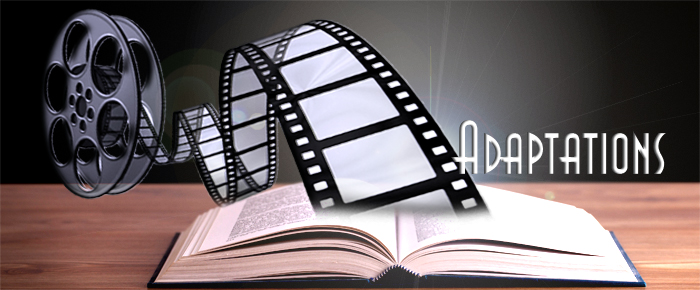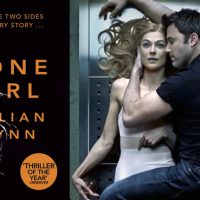
By Heidi Simmons
If you go to the movies during this award season, you will most likely see a movie adaptation from a book. Over thirty-five books were made into movies last year.
I find it a cop-out to say the book was better than the movie, because what’s really being said is the movie failed the book.
It is commonly thought that a book is always better than the movie. That may be the case, but I don’t believe that has to be the standard. The two mediums need not be compared if you consider that each is a unique art form and deliver a very different experience.
For a book, the depth and detail of the written narrative can spend as much time as the author desires exploring and explaining. A movie however has time limitations — over 120 minutes and there’s a fear of losing the audience.
When it comes to the visual component, films have shown that with today’s technology, they can go far beyond what the author describes on the page. Anything one imagines can now be created on screen.
Whether book or movie, for me, the most important consideration should be the emotional narrative. Cinematic adaptations fall short when they miss the larger meaning of the text or disconnect from the protagonist’s emotional world. Too often, adaptations fail to find the movie in the book.
I wonder if Hollywood’s interest in adaptations is simply because a book is vetted and has a built in audience of readers. Does one million copies sold equate to movie tickets sold? I don’t know. But it seems that best sellers do become box office success regardless of the quality of filmmaking.
I like to think that someone involved in the film industry falls in love with a book and then nurtures it to the screen protecting its integrity and honoring its intentions. Hopefully, that someone sees the movie potential when they read it. After all, isn’t that what happens when we read a book we love? See it on the 4D screen of our mind’s eye.
Here are a few examples of books that successfully made it to the big screen.
Those who didn’t read Gone Girl by Gillian Flynn, but saw the movie mostly thought it was an entertaining film. But the movie did not live up to the suspense that was the primary thrill of the read. With every chapter the reader was left wondering “did he or didn’t he do it.” The movie adaptation failed to equate the suspense of the book. It was only a matter of waiting to see how the drama would unfold.
Casting Ben Affleck may have contributed to the problem. In real life, he seems like a good guy, how could he do anything horrible to his wife?
Author Flynn wrote the screenplay. Although she was true to the book, she failed to shift scenes to fit the structure of a suspense thriller movie. Just because I read the book doesn’t mean I shouldn’t be on the edge of my seat in the theater.
Laura Hillenbrand’s Unbroken is an epic story of resilience and redemption. It’s rich with historic details of the Pacific Theater in WWII. Hillenbrand recounts the life of Louie Zamperini, an Olympian and war hero who survives a plane crash, endures Japanese torture and eventually returns home with Post Traumatic Stress Disorder. Now an alcoholic he’s about to lose his family when he finds God and forgiveness.
Angelina Jolie directs Unbroken from a screenplay by Joel and Ethan Cohen and others. This is a beautifully made film. However, creative decisions had to be made to make the book fit the time constraints of a film. It had to show a lifetime in less than three hours.
The heart and soul of this book is Zamperini’s survival, not only during his captivity, but also after he returns to civilian life. When he starts his life again, his desire for revenge is overwhelming, and his feeling of being powerless to do anything nearly destroys him.
Director Jolie centers the film on his imprisonment using flashbacks to show Zamperini’s life growing up and running in the Olympics. The film ends when the war ends. Zamperini endures the torture and so does the moviegoer. It’s hard to watch. Jolie concludes the film with photos of the real Zamperini with on screen notations about the final chapters of his life.
Hillenbrand captured the tenacious spirit of Zamperini and his will to live. In my opinion, the movie version didn’t manifest that beautiful spirit. But Jolie clearly loved and respected Zamperini and her tribute to him is sincere.
The Theory Of Everything is based on Jane Hawking’s memoir first published as Music to Move the Stars. She is Stephen Hawking’s ex-wife. The movie is a romantic story of idealistic college kids who decide to make their lives work regardless of Hawking’s developing disease. Stephen, at first is only given two years to live. Jane fights to keep Stephen functioning, productive and hopeful. They have three children together.
As are most memoirs, Jane’s story is a first person one-sided point of view. In the book, she shares a much more complex and detailed life together than is depicted on film. Her book reflects the intensity and volatility of their relationship as well as animosity from putting her own career aside.
The movie version, of course, is simplified and condensed. But the film brilliantly combines her story with his pursuit of understanding the secrets of time and space. Thematically, the filmmakers successfully merge their two worlds to create a beautiful story of love and cosmic mystery.
Great film adaptations always consider the book’s narrative and honor its theme. A book works best as a film when it combines amazing visuals with a captivating story.














































